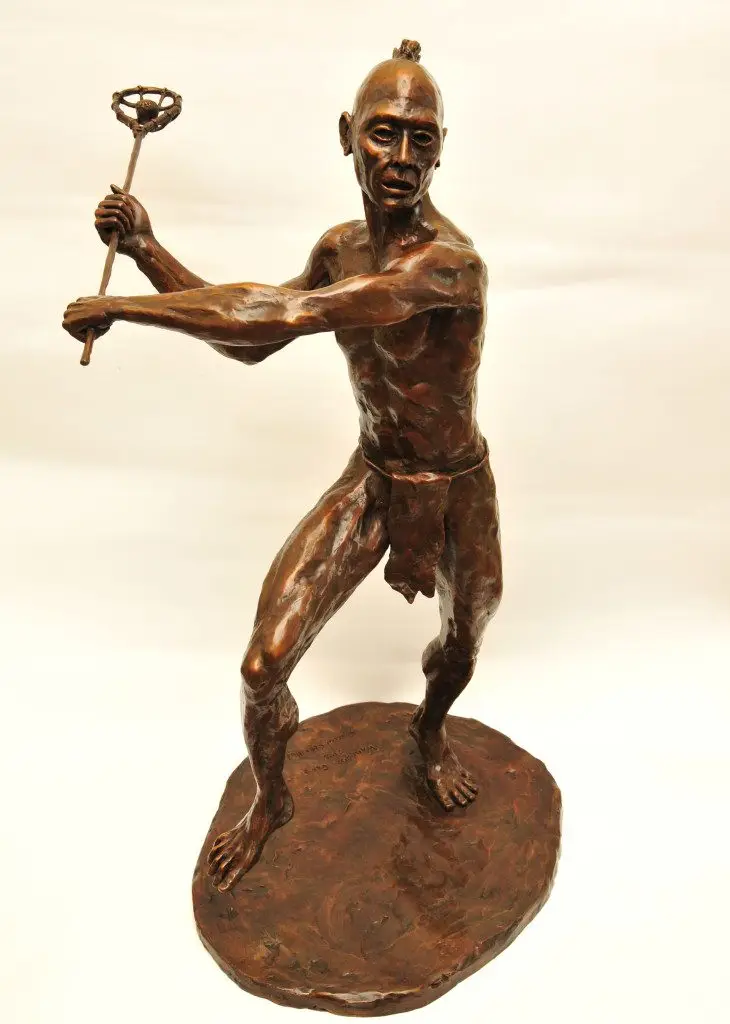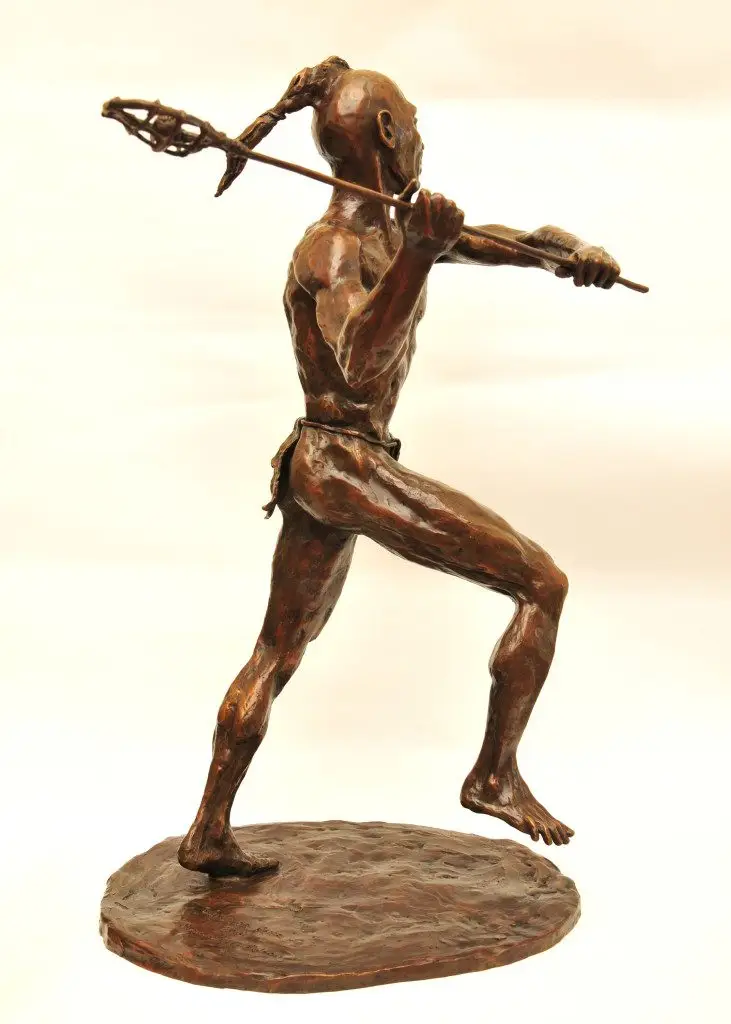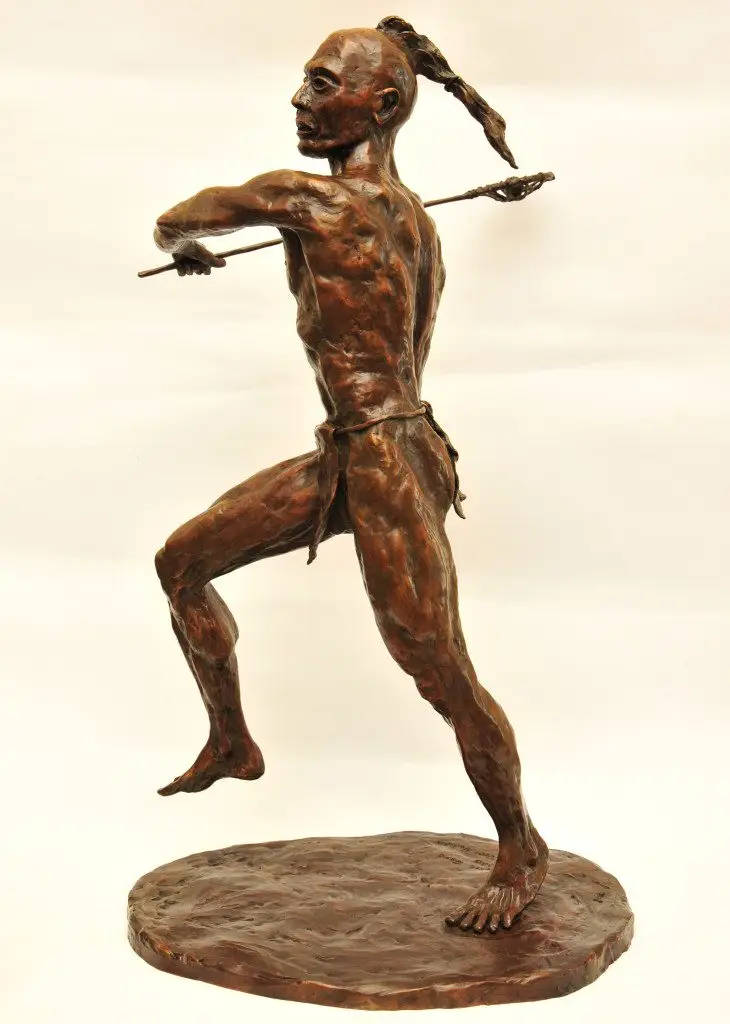•2016 • Bronze • Patina – Gold/Brown• Height 31”, Width14”, Depth 18″ • 68 lbs.
Series of 24
Price upon request
The game we know as lacrosse was played by the various North American Indian tribes, often as a day-long event and was frequently a means of settling disputes between tribes and villages. It was played aggressively, as the translation of its Cherokee name as ” little war” or its Mohawk name “little brother of war”, would indicate. There was little passing of the ball, for example, and it was viewed as cowardly to avoid contact with an opponent. The game could involve hundreds of players and the distance between goals varied between a few hundred yards and several miles. Given the extraordinary physical demands of these contests, clothing was usually minimal, as this figure suggests, but also consistent with the Indian life style.
I modeled the stick after a blend of the ones used by the Creek, Choctaw, and Cherokee in the mid 1800’s. The stick evolved over time from a simple spoon-like device, to this one with a closed loop and deer sinew webbing. Eventually, a larger u-shaped stick became common with a much larger net. While early lacrosse balls were made of wood, by the 1800’s the ball, which I have copied here, was made with a skin cover very much like our baseball, covering a light-weight filler of feathers or hair.
A copy of this sculpture is both at Bryant University, Smithfield, RI in the Chace Athletic Center where it is accompanied by a plaque inscribed each year with the name of the current year’s winner of the lacrosse “Bulldog Warrior” award, and at my alma mater, Princeton, where it was donated by the family of Howard ” Cookie” Krongard as a memorial to the lacrosse Hall of Fame legend.


